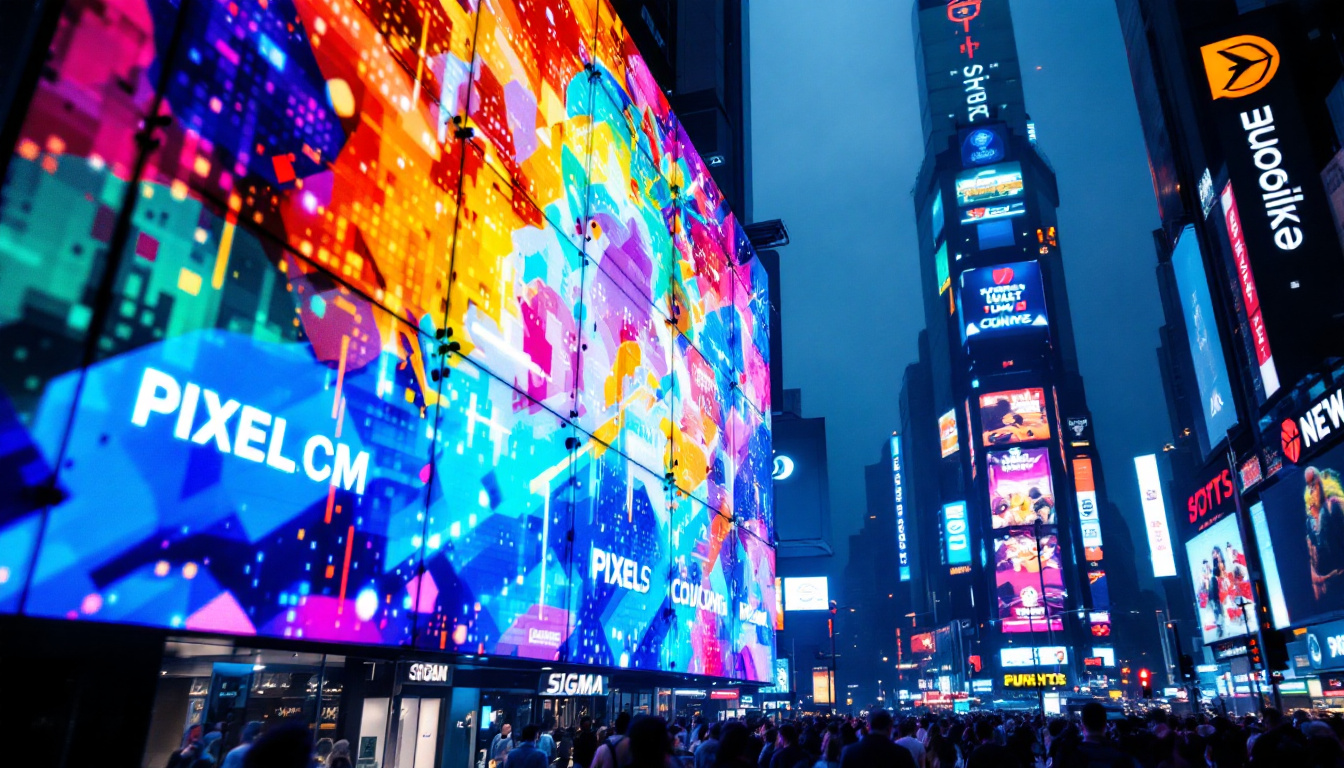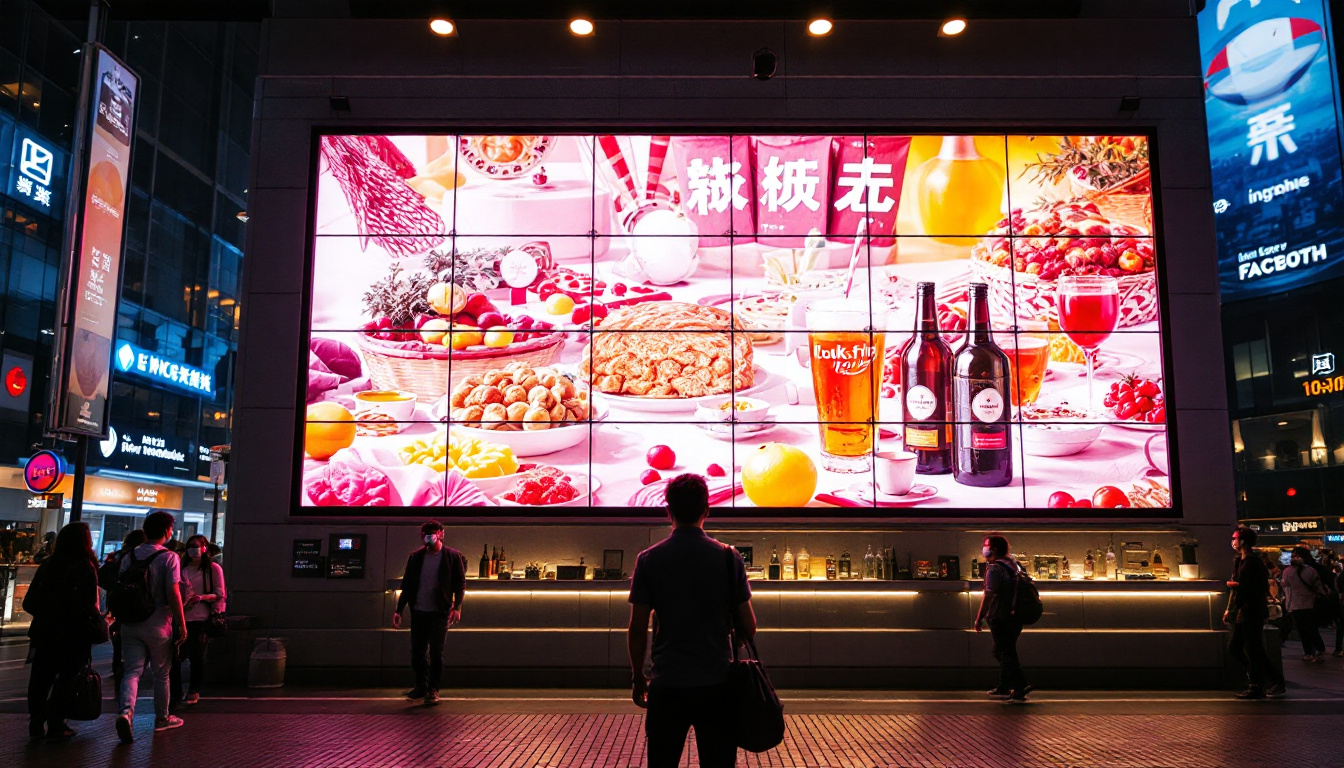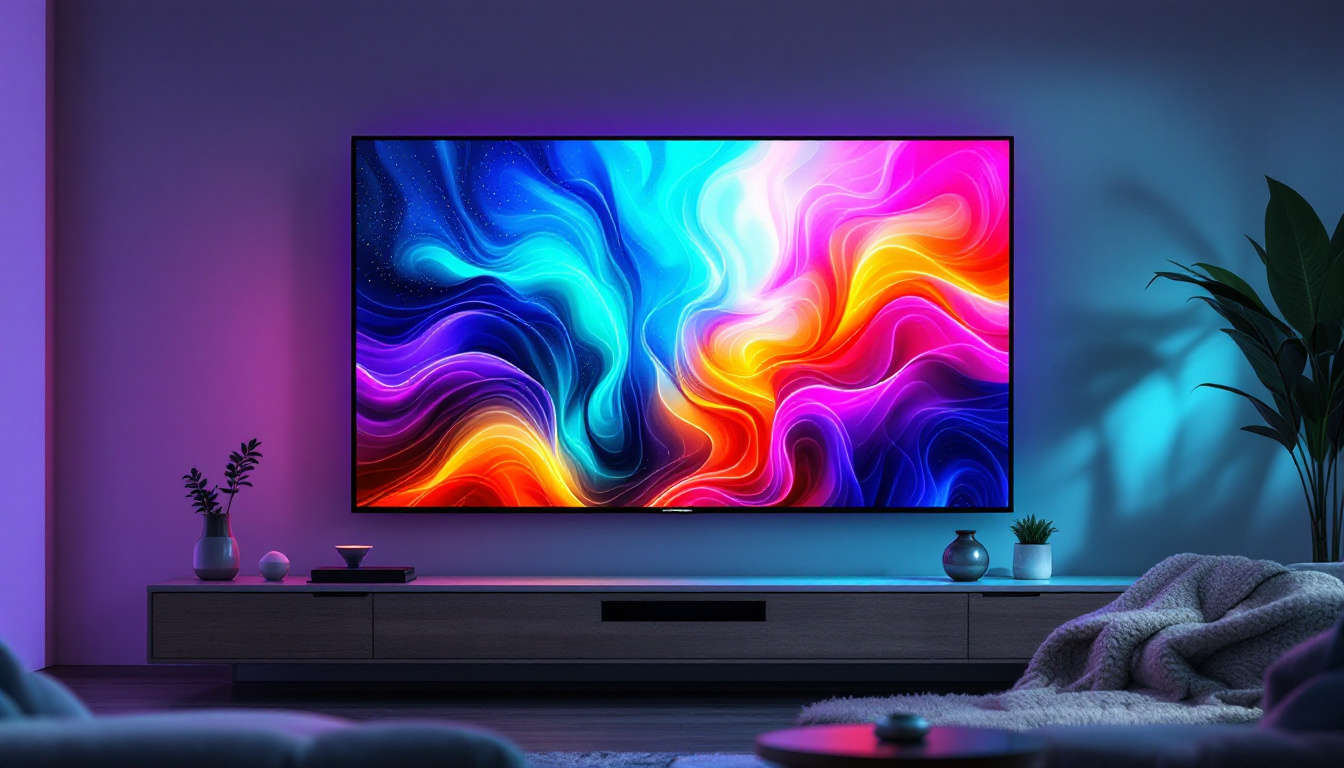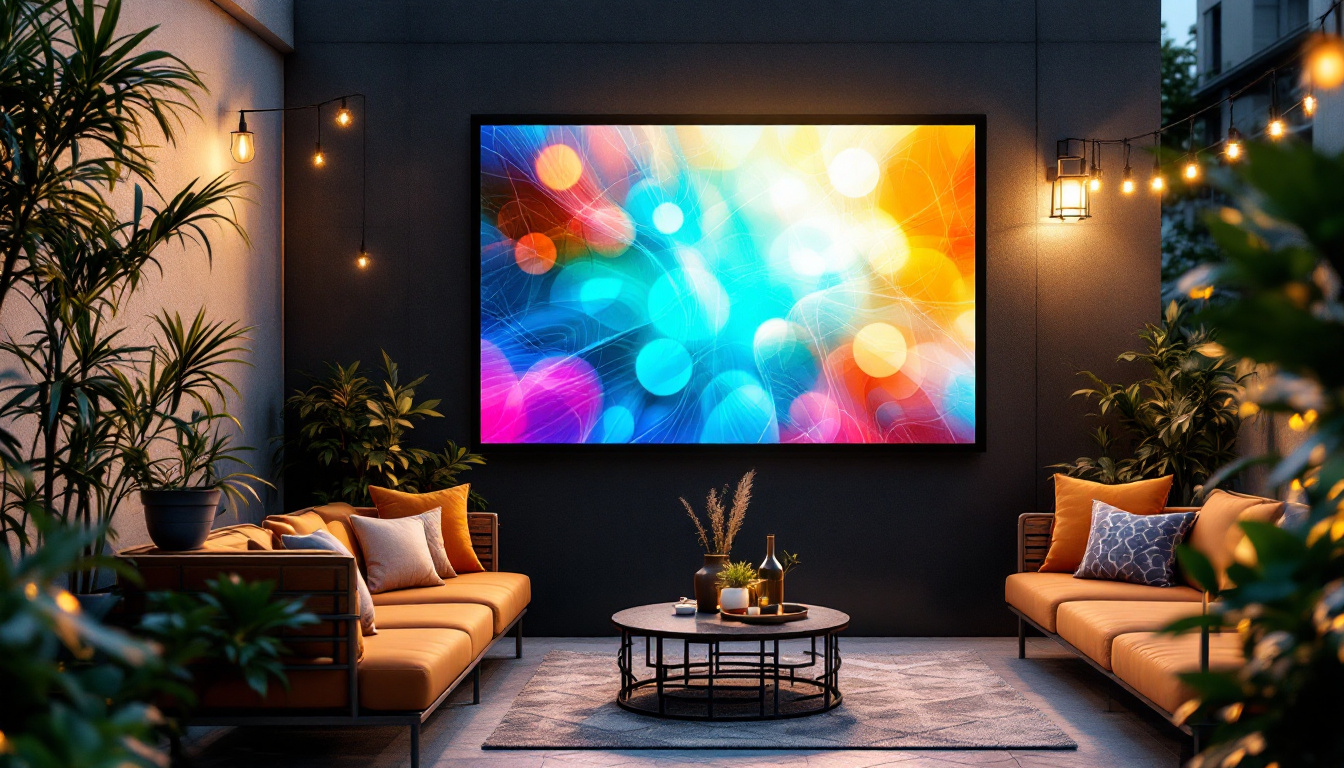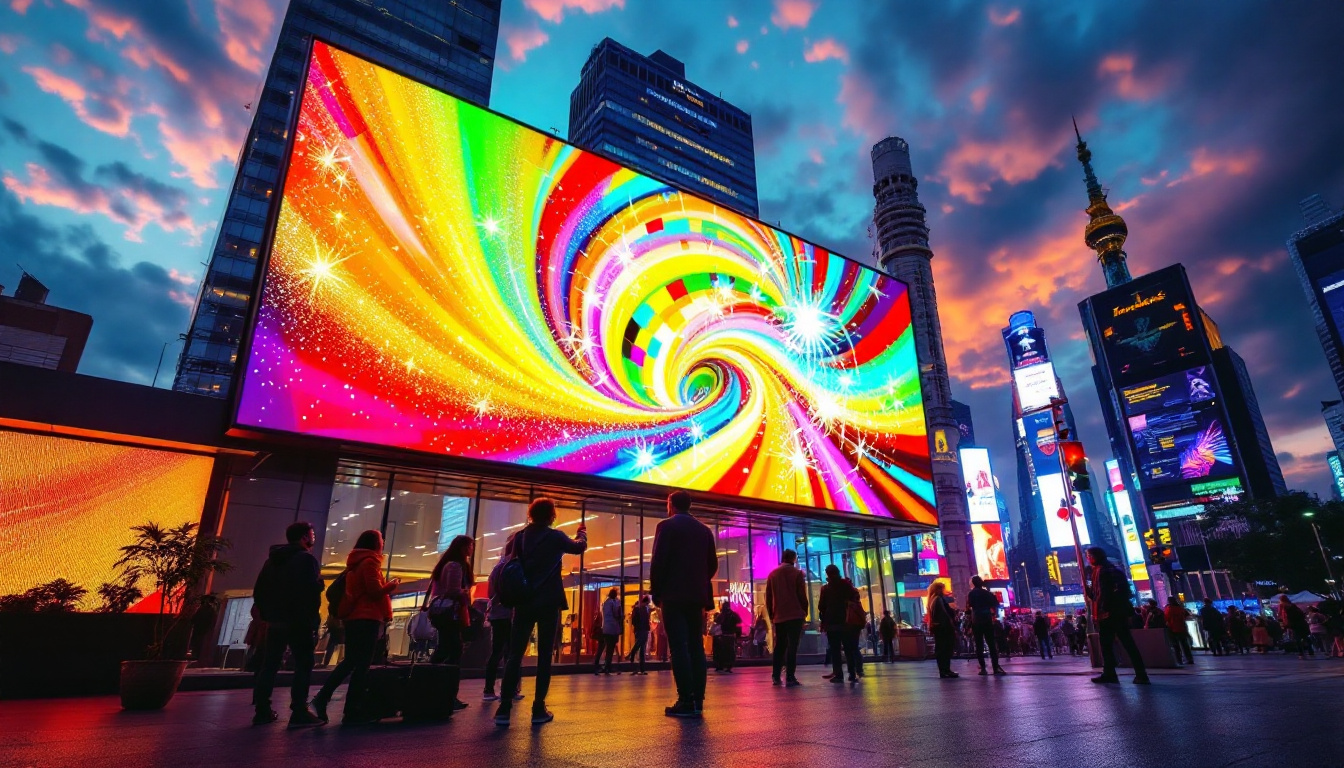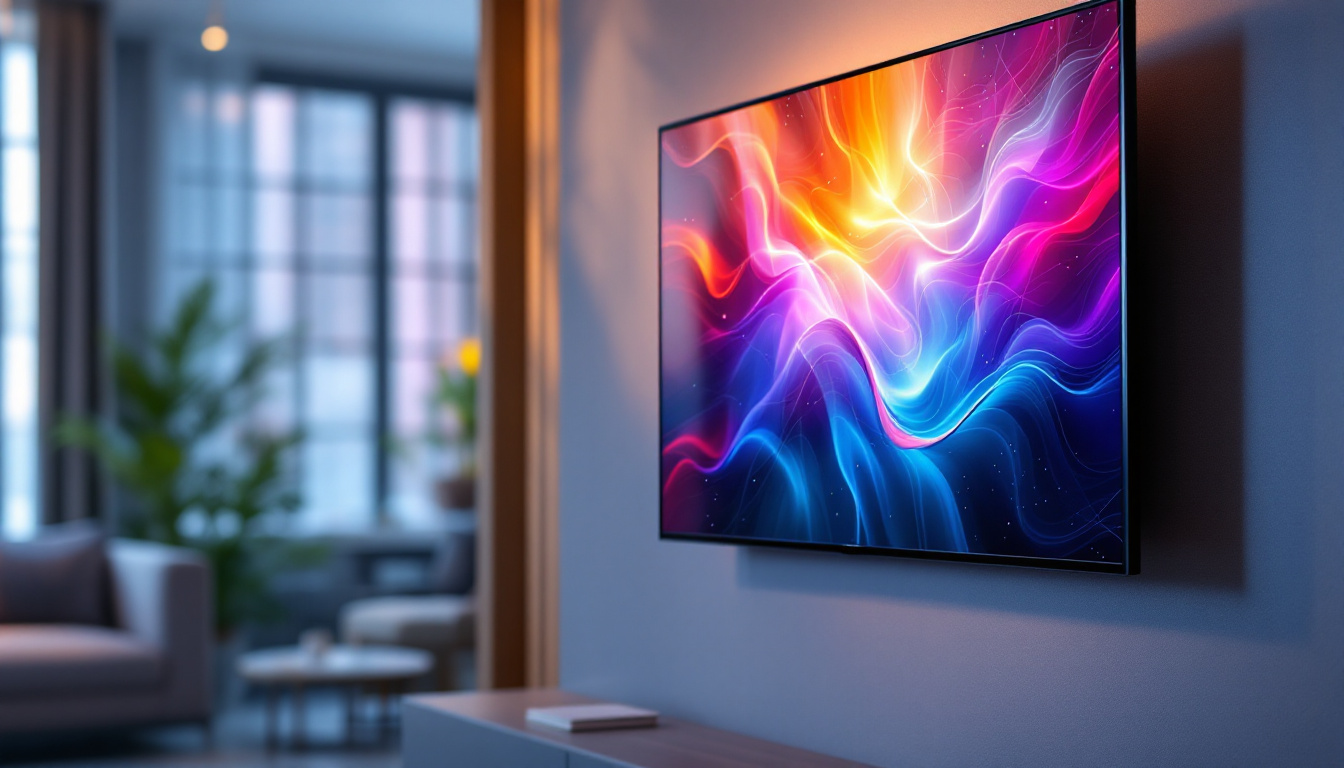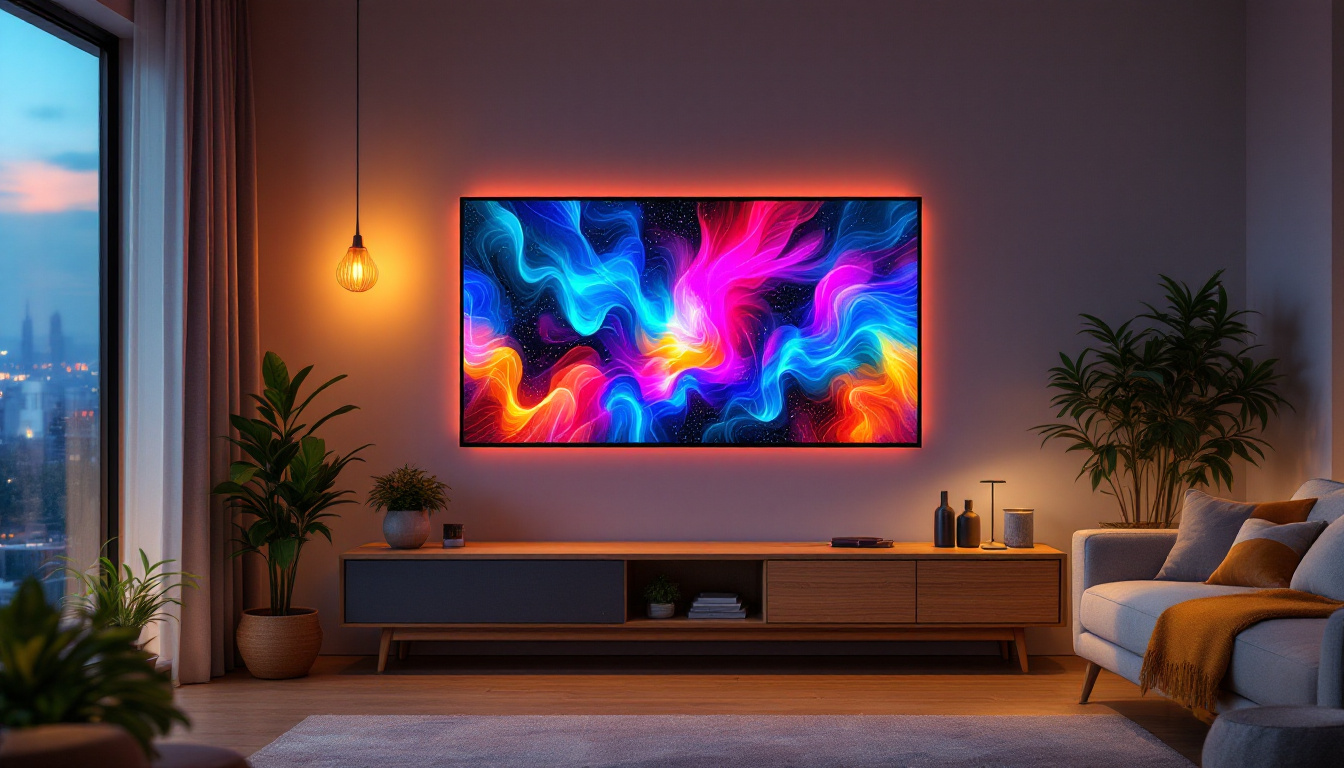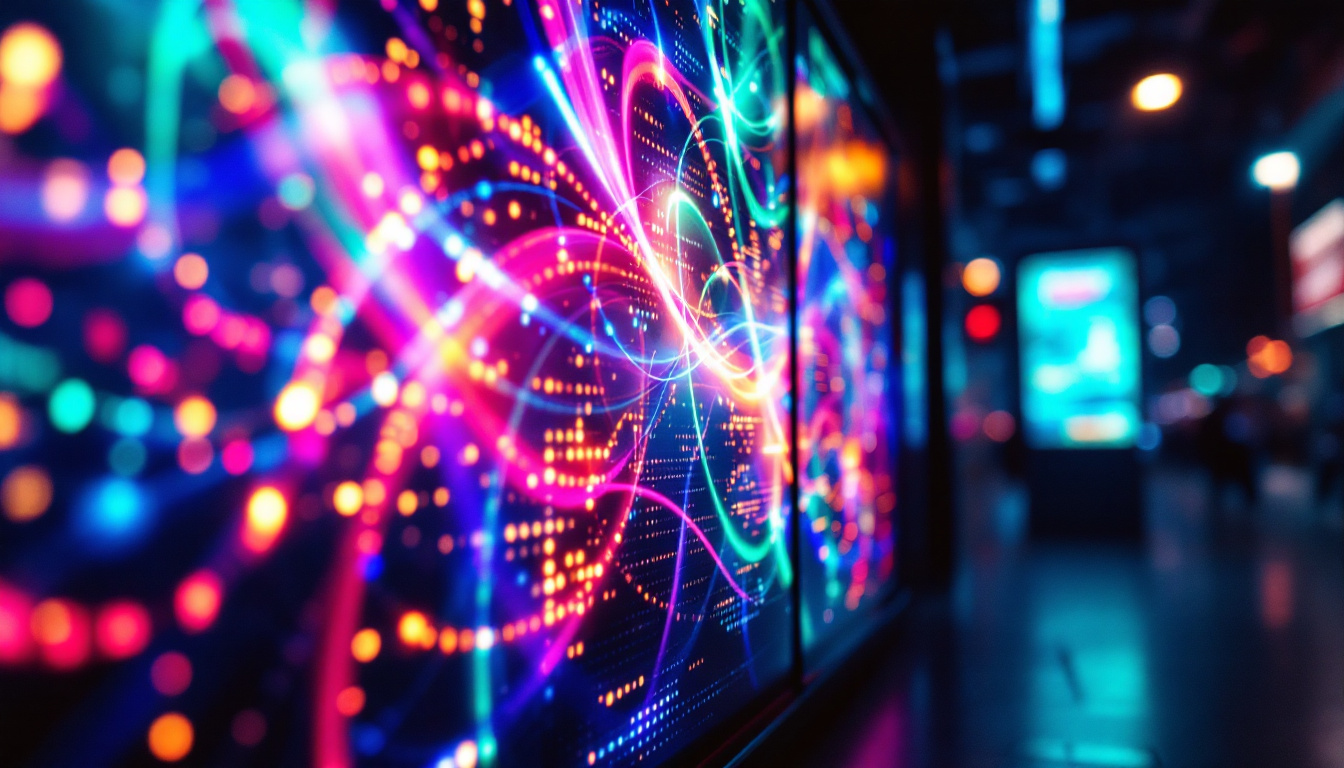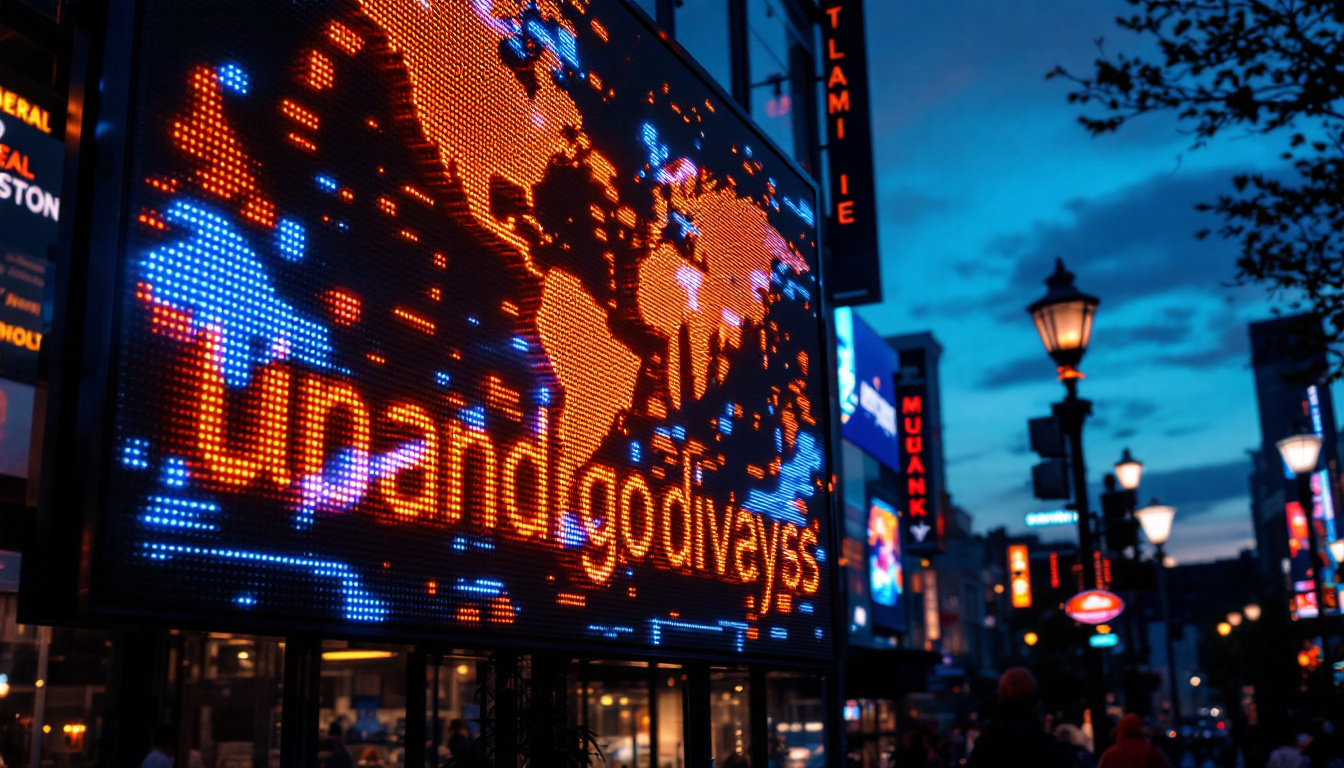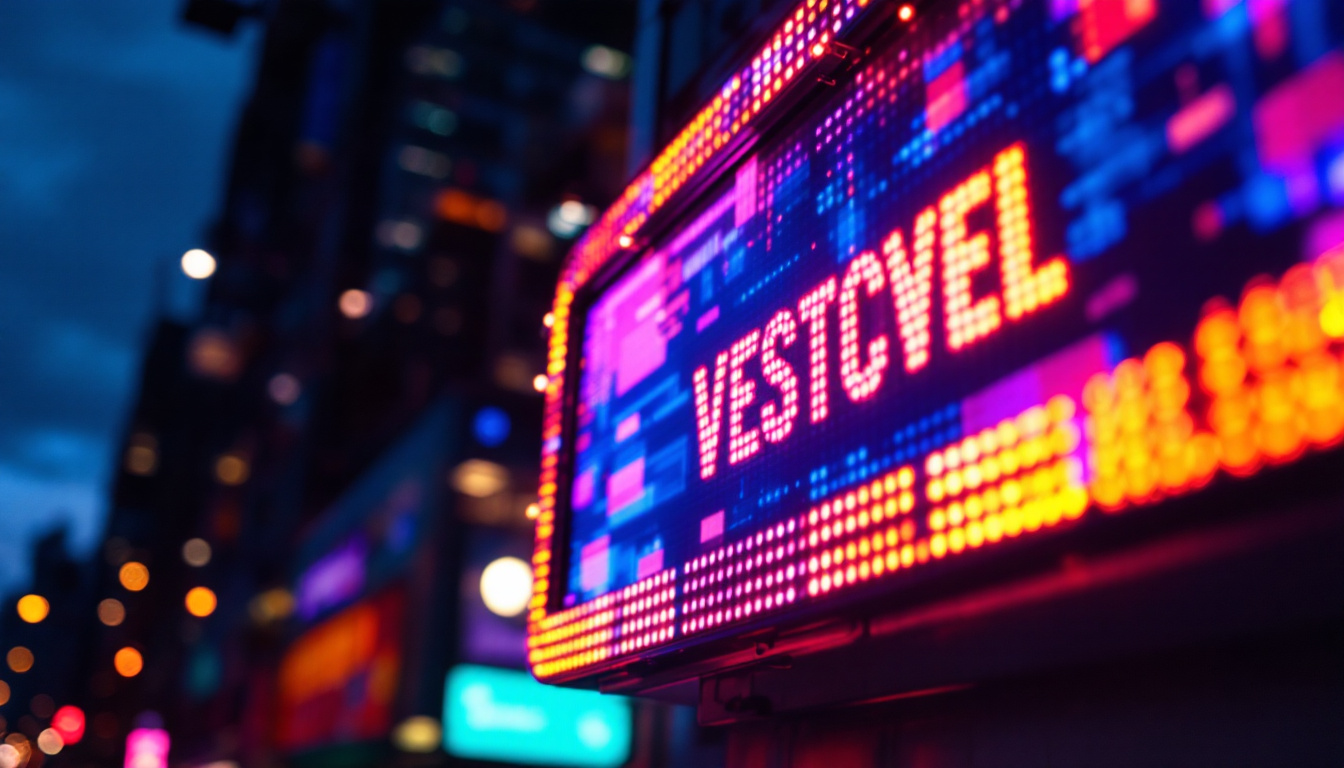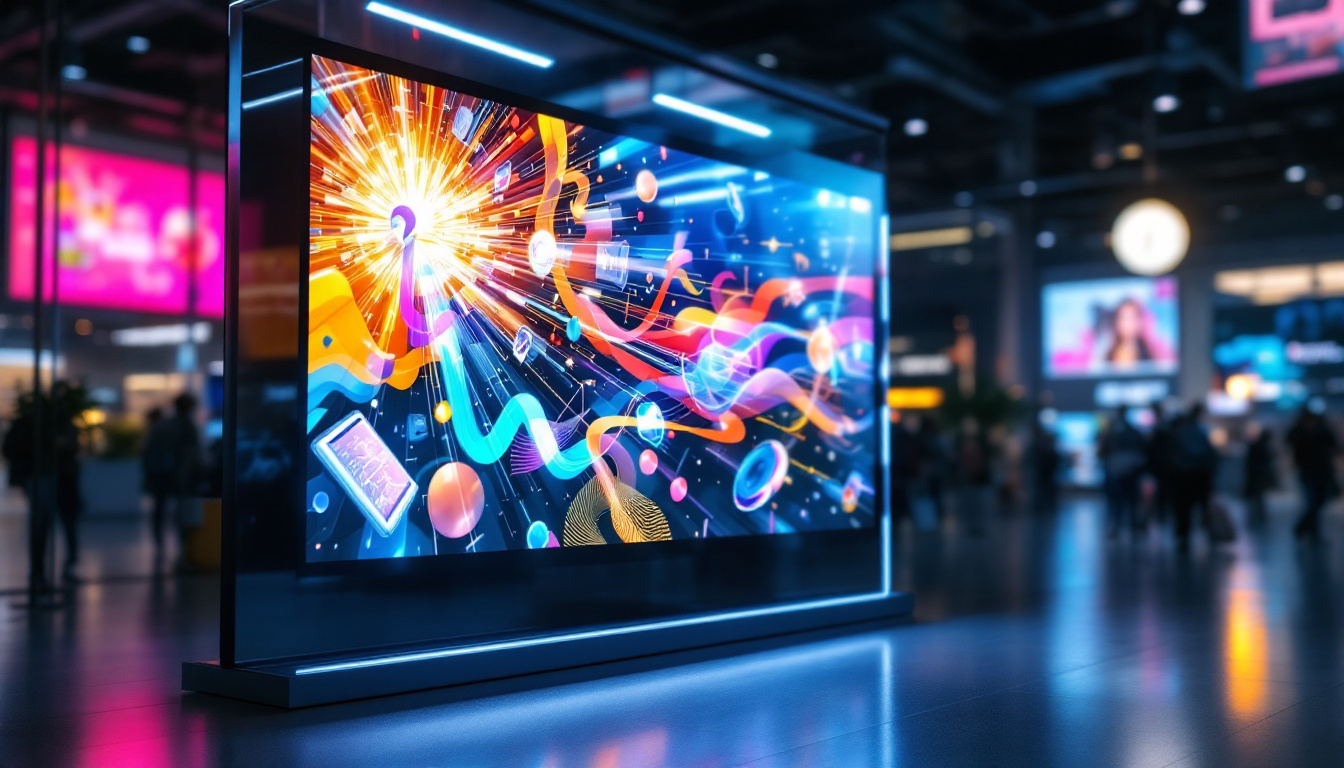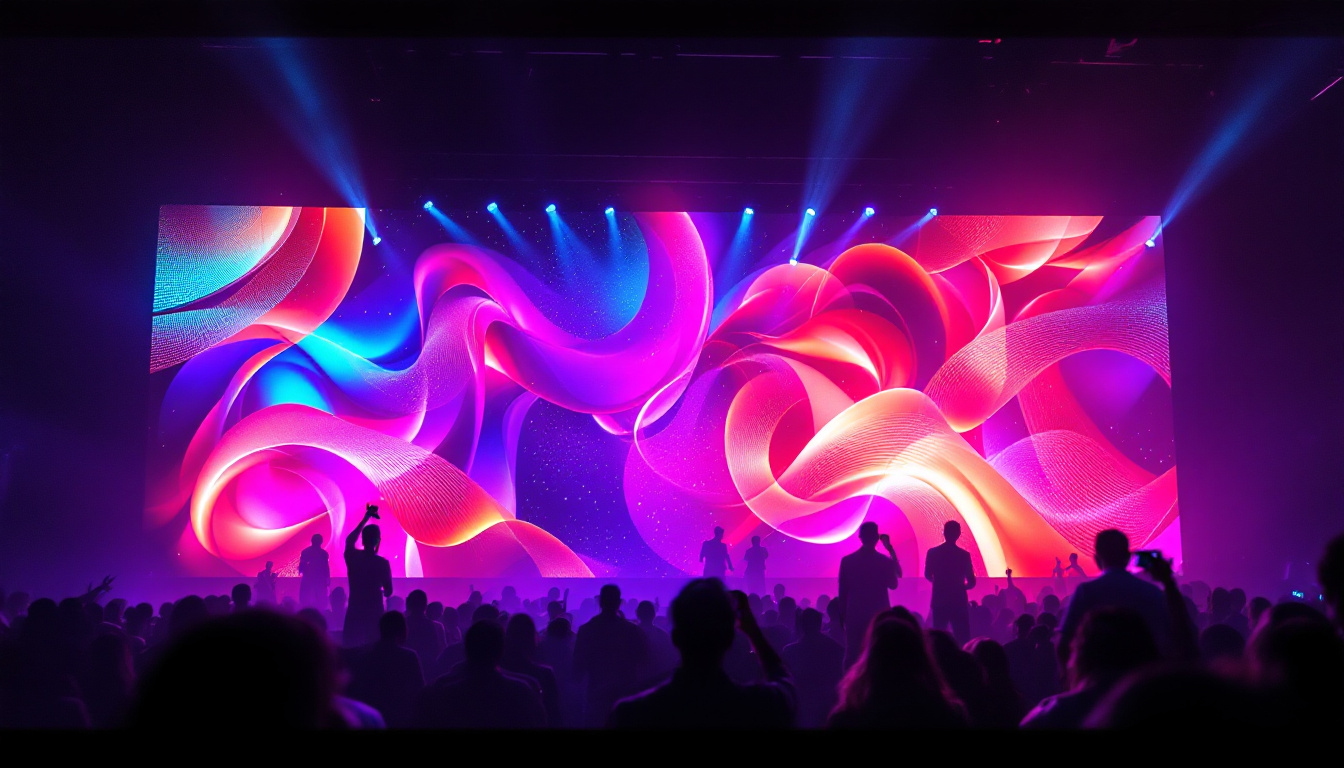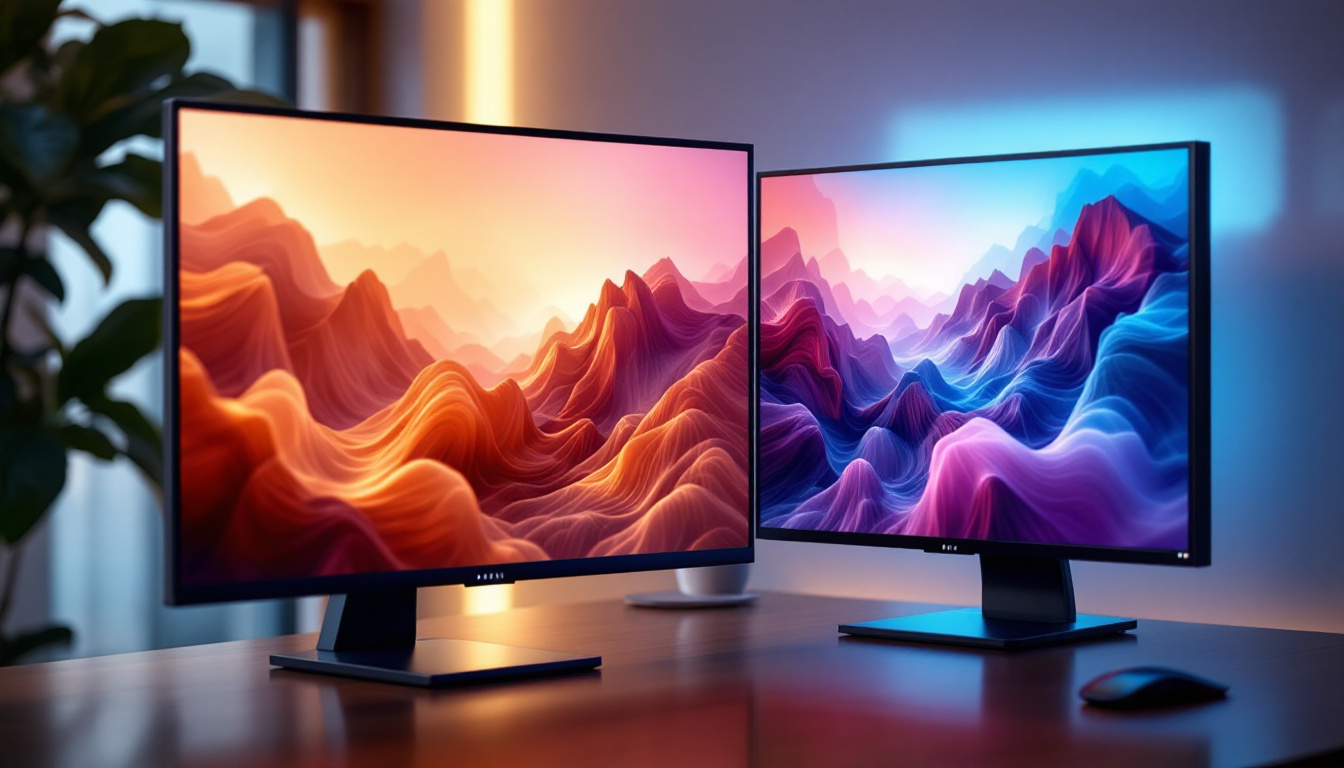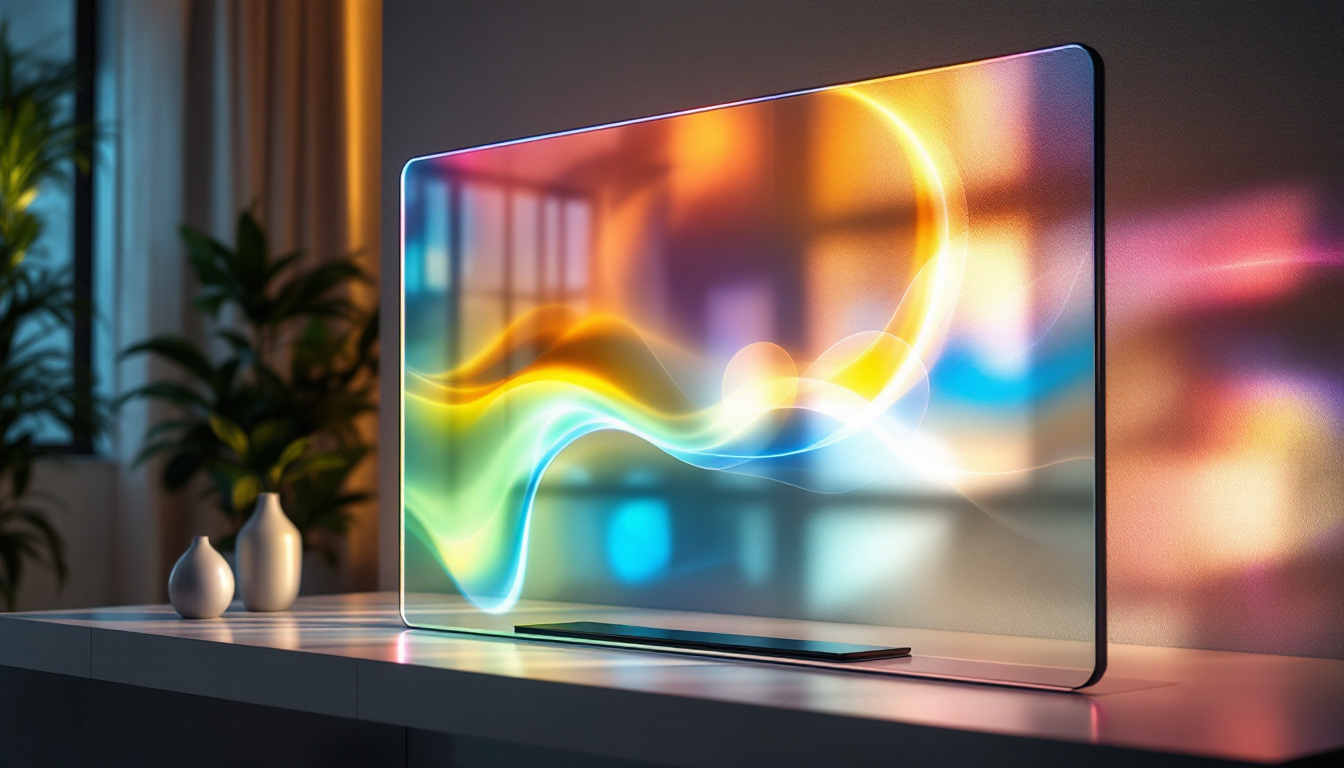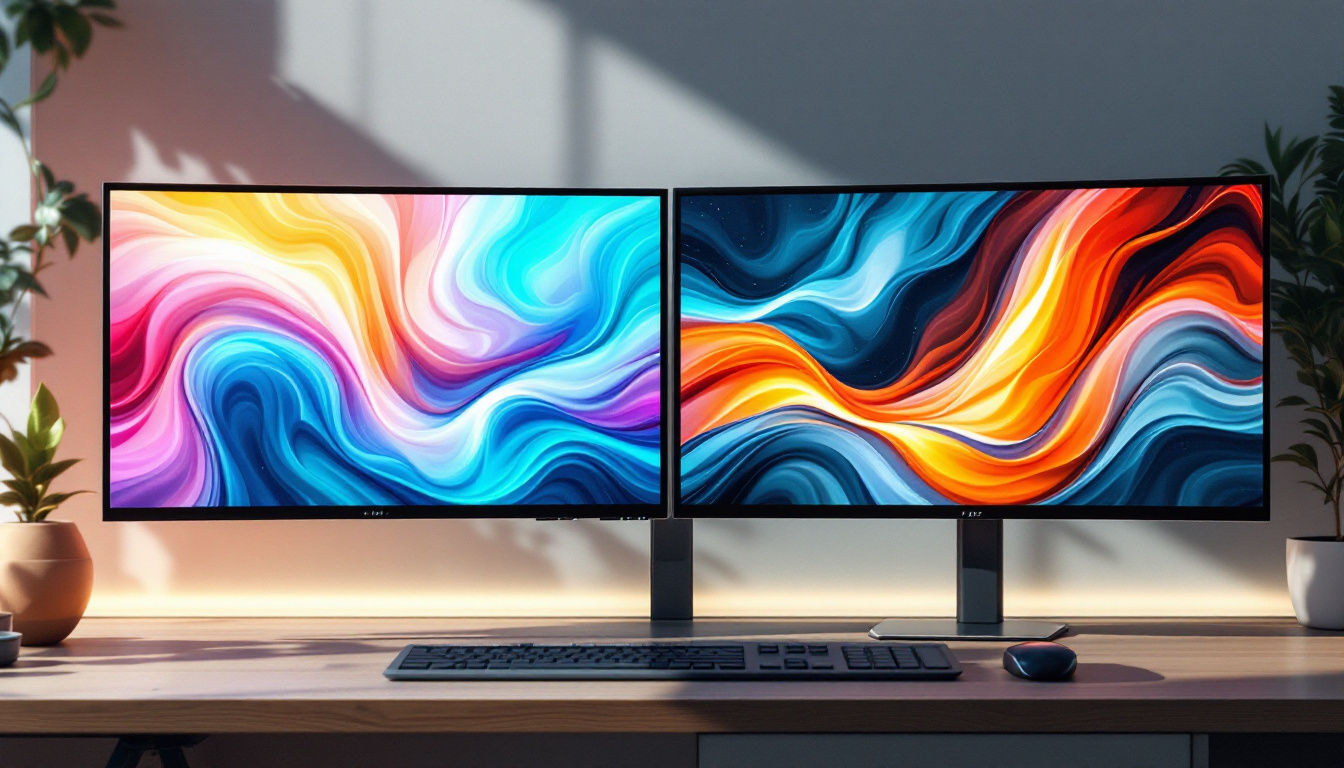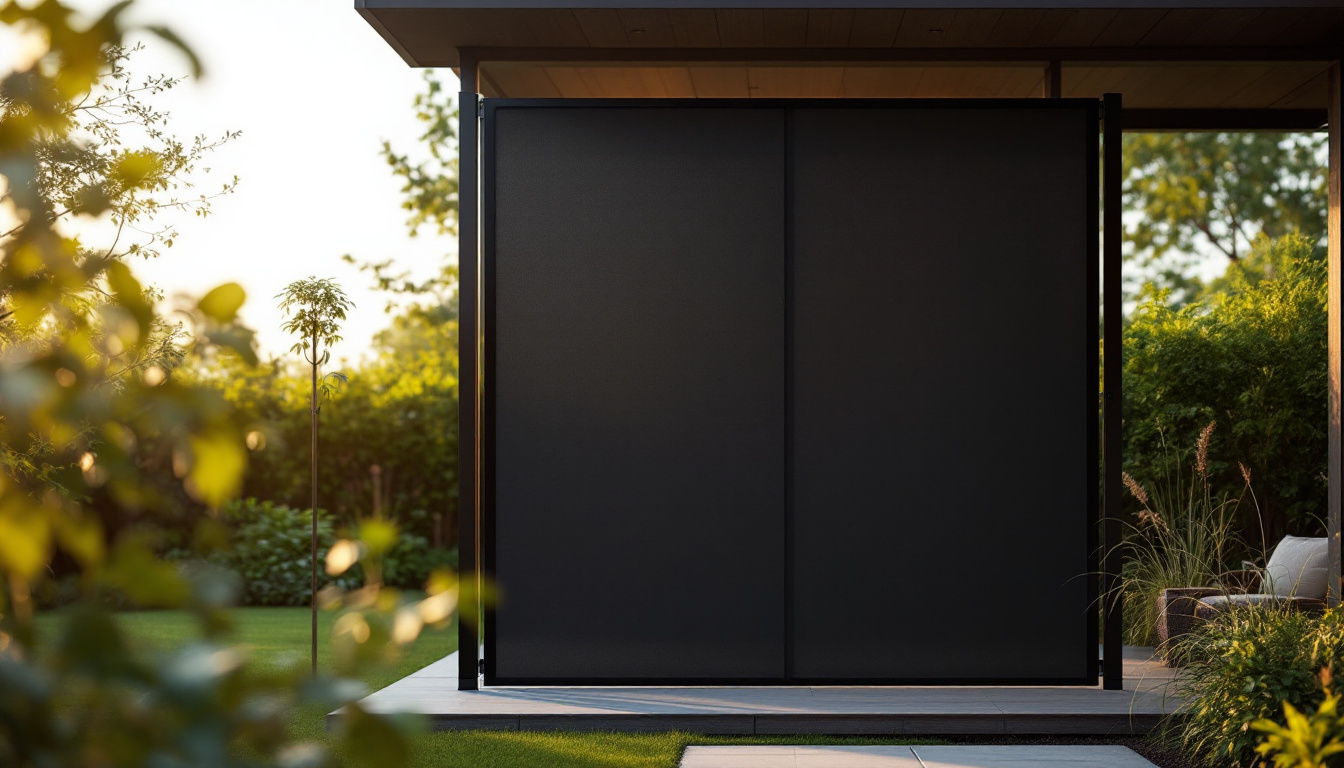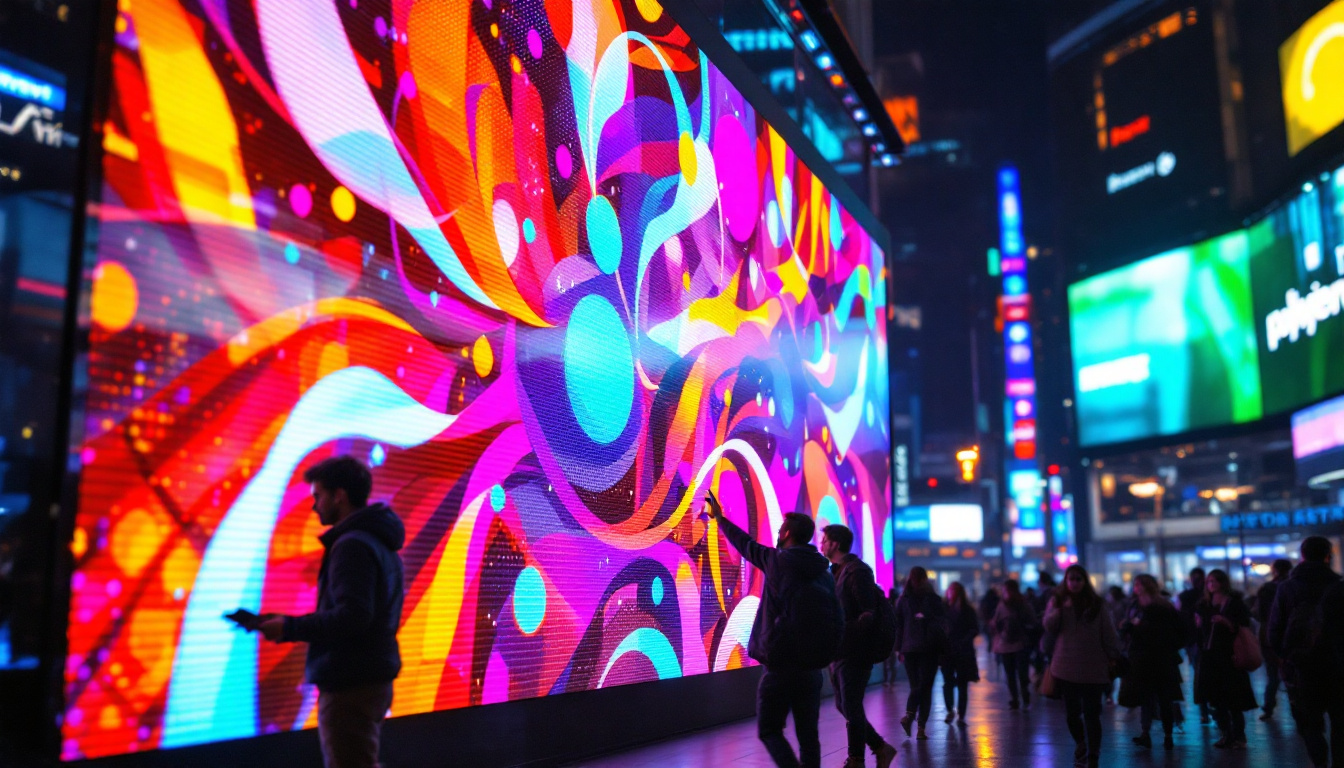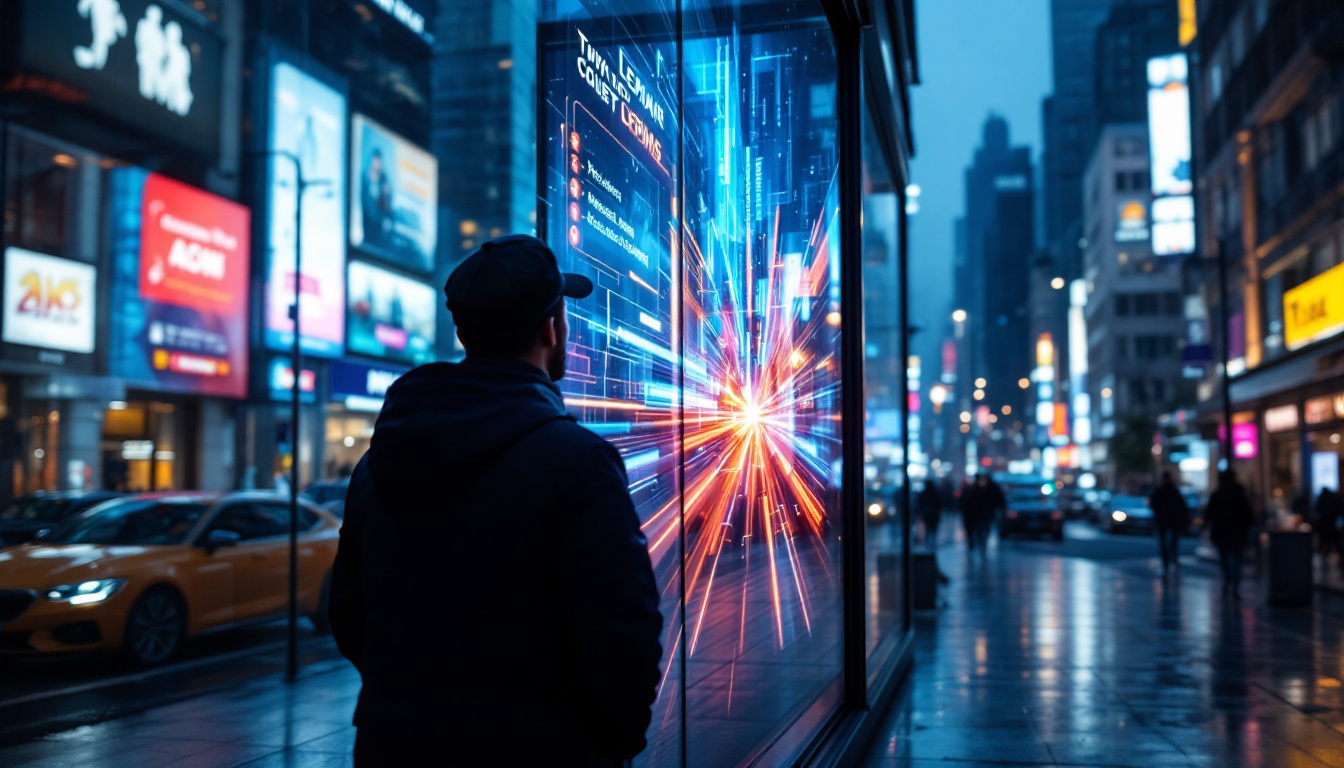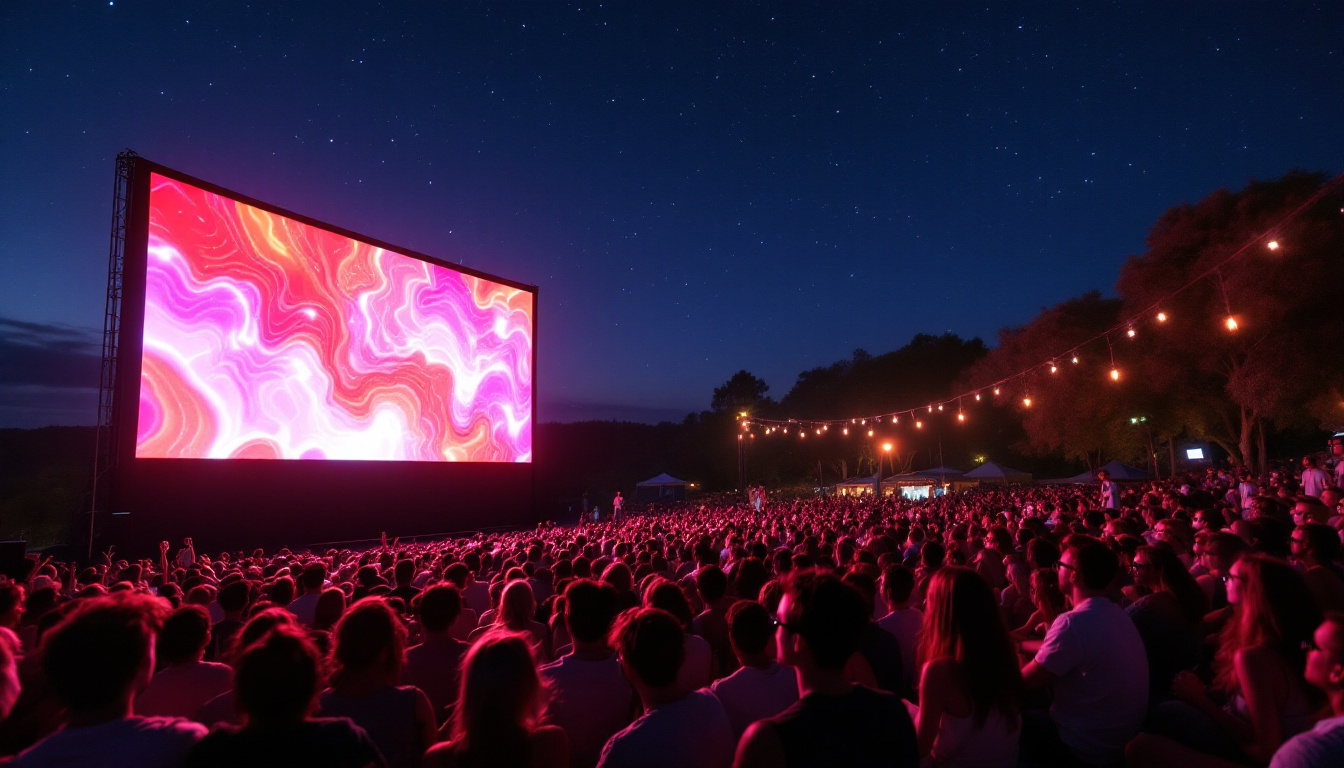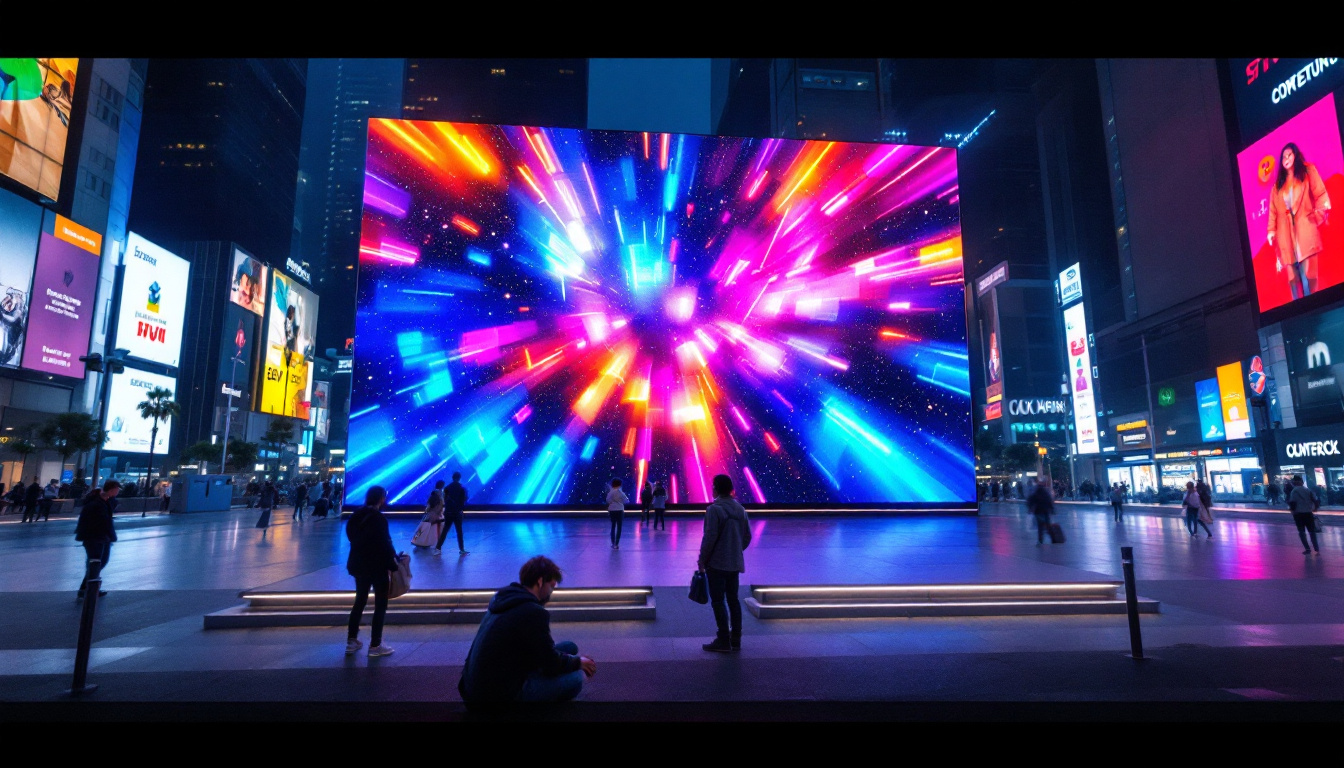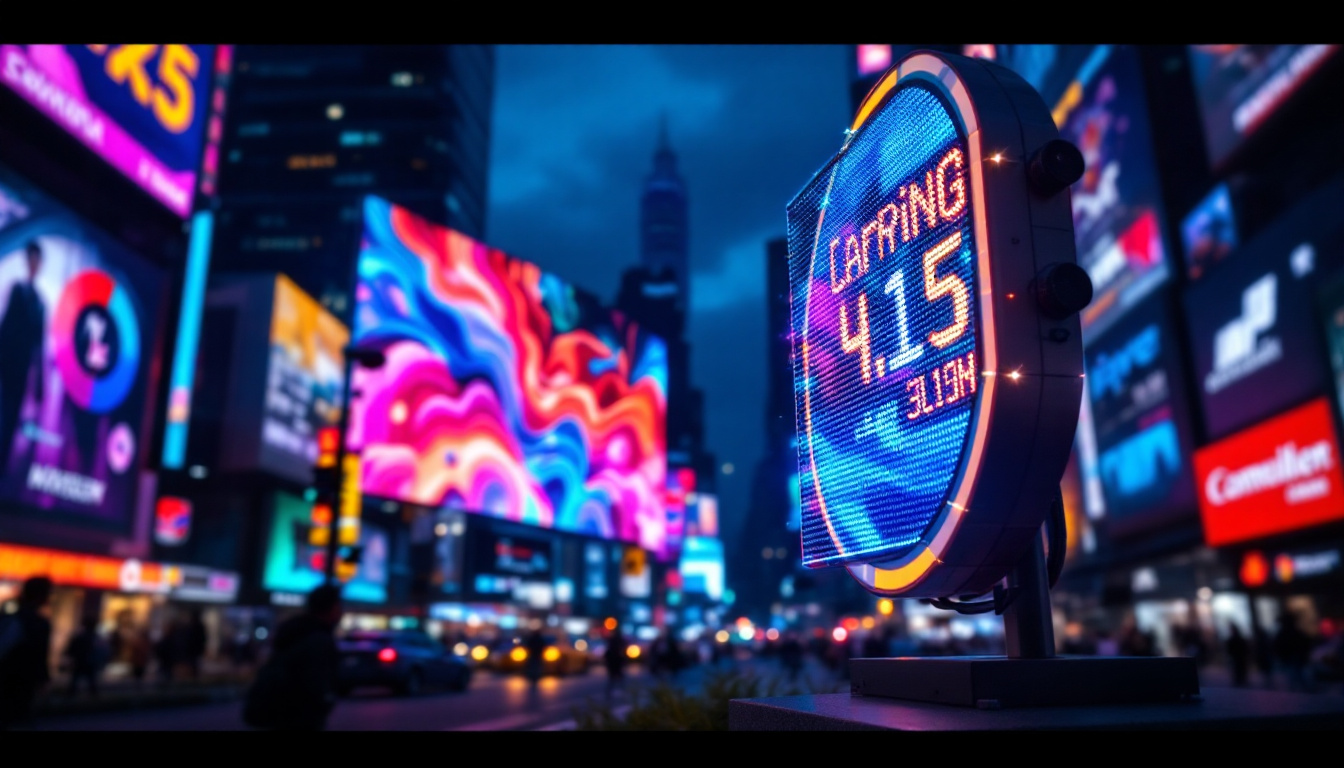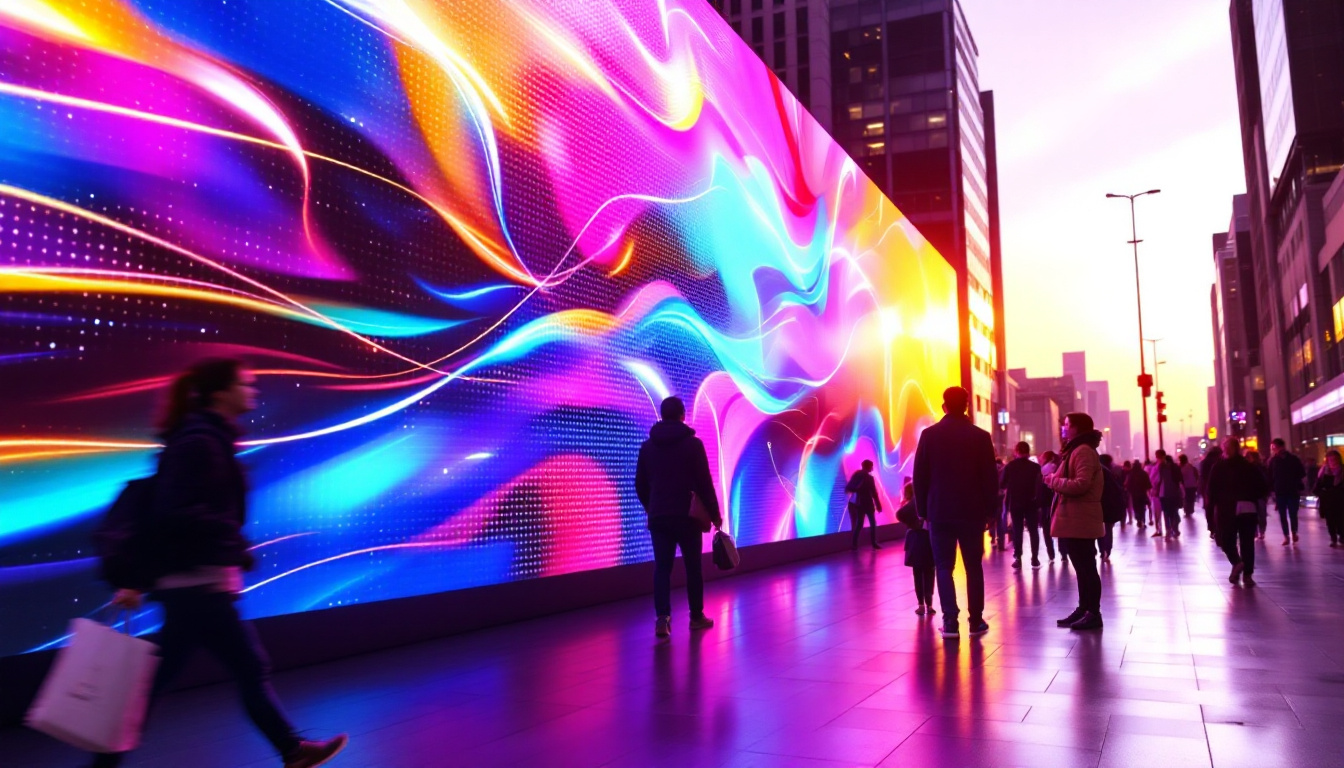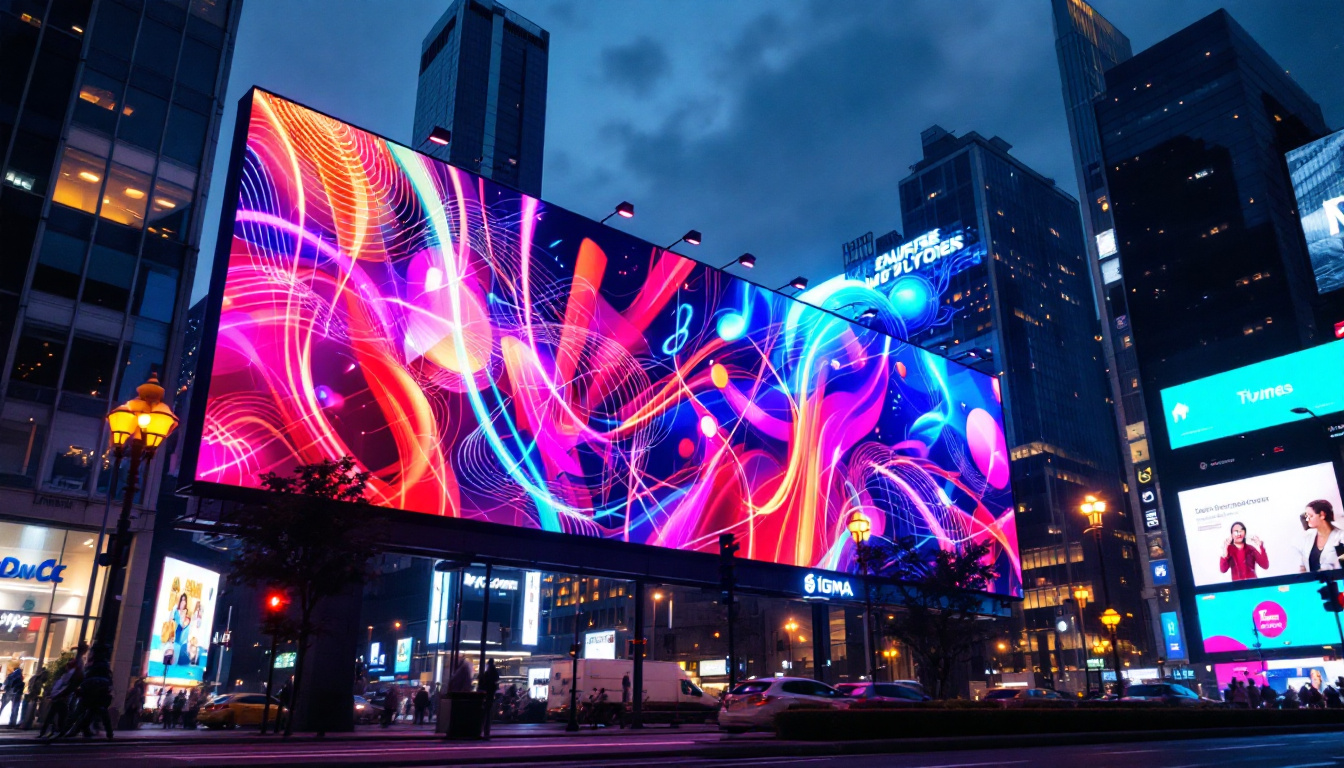In the realm of modern cinema, the advent of LED display technology has revolutionized the way films are produced, distributed, and experienced. The term “Pixel Movie” has emerged as a catchy phrase to describe films that utilize high-resolution LED displays for their screenings. This article delves into the intricacies of LED displays, their application in filmmaking, and how they enhance the overall viewing experience.
Understanding LED Display Technology
LED, or Light Emitting Diode, technology has transformed various industries, including entertainment. At its core, an LED display consists of a matrix of tiny diodes that emit light when an electric current passes through them. This technology offers several advantages over traditional display methods, such as LCD and projection systems. The compact size of LEDs allows for thinner screens and more flexible designs, enabling creative applications in both indoor and outdoor settings. As a result, LED displays have become a staple in modern advertising, sports arenas, and concert venues, providing eye-catching visuals that engage audiences like never before.
How LED Displays Work
LED displays function by combining red, green, and blue (RGB) diodes to create a spectrum of colors. Each pixel on the screen is made up of these three colored diodes, which can be adjusted in brightness to produce a wide range of hues. The result is a vibrant and dynamic visual experience that captivates audiences. Additionally, the rapid response time of LEDs allows for smooth transitions and animations, making them ideal for video content and live broadcasts. This capability enhances the storytelling aspect of presentations, allowing for a more immersive experience that resonates with viewers.
Moreover, LED displays are capable of producing higher brightness levels compared to traditional displays. This is particularly advantageous in large venues where ambient light can wash out images. The ability to maintain clarity and color accuracy in bright environments makes LED technology a preferred choice for filmmakers and event organizers alike. Furthermore, advancements in LED technology have led to the development of high dynamic range (HDR) displays, which can showcase deeper blacks and brighter whites, further enriching the viewing experience. As a result, audiences can enjoy a more lifelike representation of colors and details, whether they are watching a movie, attending a concert, or viewing a live sporting event.
Types of LED Displays
There are several types of LED displays, each tailored for specific applications. The two most common types are:
- Direct View LED: This type consists of individual LED modules that are assembled to form a larger screen. Direct view LED displays are often used in outdoor advertising and large-scale events due to their impressive brightness and visibility. Their modular design allows for easy customization in size and shape, making them versatile for various installations, from massive billboards to intricate stage backdrops.
- LED Backlit LCD: In this configuration, an LCD panel is illuminated from behind by LED lights. This type is commonly found in televisions and computer monitors, offering a balance between quality and cost. The use of LED backlighting not only improves energy efficiency but also enhances the contrast ratio of the display, providing viewers with sharper images and more vibrant colors.
In addition to these common types, there are also specialized LED displays designed for niche markets. For instance, transparent LED displays are gaining popularity in retail environments, allowing for creative advertising while maintaining visibility into the store. Similarly, flexible LED screens are emerging, enabling curved or irregular shapes that can fit unique architectural designs. These innovations are pushing the boundaries of how LED technology can be utilized, opening new avenues for creativity and engagement in visual communication.
The Role of LED Displays in Filmmaking
LED displays have found a significant role in the filmmaking process, from pre-production to post-production. Their versatility and superior image quality have made them an essential tool for filmmakers looking to push the boundaries of visual storytelling.
Pre-Production Planning
During the pre-production phase, filmmakers often utilize LED displays for concept visualization and storyboarding. High-resolution screens allow directors and cinematographers to see a more accurate representation of their vision. This can facilitate better planning for lighting, camera angles, and set design.
Additionally, LED displays can be used for virtual sets, where actors perform against a backdrop of digital environments. This technology allows for real-time integration of CGI elements, streamlining the filming process and reducing the need for extensive post-production work.
On-Set Applications
On set, LED displays serve multiple purposes. They can be used as monitors for the crew to view scenes as they are being filmed, ensuring that everything is captured as intended. Furthermore, the use of LED walls enables filmmakers to create immersive environments without the need for elaborate physical sets.
For instance, the use of LED technology in productions like “The Mandalorian” has demonstrated how virtual backgrounds can enhance storytelling by allowing for dynamic camera movements and lighting changes that would be difficult to achieve with traditional green screens.
Enhancing the Viewing Experience
One of the most significant impacts of LED display technology is on the audience’s viewing experience. The clarity, brightness, and color accuracy of LED screens contribute to a more engaging and immersive cinematic experience.
Brightness and Color Accuracy
LED displays are known for their ability to produce bright images with high contrast ratios. This means that even in well-lit environments, the visuals remain sharp and vibrant. The enhanced color accuracy of LED technology allows filmmakers to convey their artistic vision more effectively, ensuring that audiences see the film as intended.
Furthermore, the wide color gamut offered by LED displays allows for a richer visual experience, with more nuanced shades and tones. This is particularly important in genres such as animation and fantasy, where color plays a crucial role in storytelling.
Immersive Audio-Visual Integration
In addition to visual enhancements, LED displays can be integrated with advanced audio systems to create a holistic sensory experience. The synchronization of sound and visuals is critical in engaging the audience and drawing them into the narrative. When combined with immersive soundscapes, LED technology can elevate the emotional impact of a film.
Moreover, the use of LED displays in theaters can also facilitate interactive experiences, where audiences can engage with the film in new ways. This could include augmented reality elements that enhance the storytelling and create a more participatory environment.
Challenges and Considerations
While LED display technology offers numerous advantages, it is not without its challenges. Filmmakers and producers must navigate various considerations when incorporating this technology into their projects.
Cost Implications
One of the primary challenges associated with LED displays is the cost. High-quality LED screens can be expensive to purchase or rent, which may pose a barrier for independent filmmakers or smaller production companies. Budget constraints can limit the extent to which filmmakers can utilize this technology.
However, as the technology continues to evolve and become more widespread, costs are expected to decrease. This may open up new opportunities for a broader range of filmmakers to experiment with LED displays in their projects.
Technical Expertise
Implementing LED technology requires a certain level of technical expertise. Filmmakers and crew members must be familiar with the intricacies of LED displays to maximize their potential. This includes understanding how to calibrate colors, adjust brightness levels, and integrate the displays with other production equipment.
As a result, training and education become essential components for those looking to work with LED technology in filmmaking. Workshops, online courses, and hands-on experience can help bridge the knowledge gap and empower filmmakers to leverage this innovative tool effectively.
The Future of LED Displays in Cinema
The future of LED displays in cinema looks promising, with ongoing advancements in technology and increasing adoption across the industry. As filmmakers continue to explore the possibilities offered by LED technology, audiences can expect to see even more innovative storytelling techniques and visually stunning films.
Emerging Trends
Several emerging trends are shaping the future of LED displays in cinema. One notable trend is the rise of microLED technology, which offers even higher resolutions and improved efficiency. MicroLED displays consist of smaller individual diodes, allowing for greater pixel density and enhanced image quality.
Additionally, the integration of artificial intelligence and machine learning into LED display technology is expected to further enhance the filmmaking process. AI can assist in color grading, scene composition, and even script analysis, streamlining workflows and improving overall production quality.
Global Adoption
As the demand for high-quality visual content continues to grow, the global adoption of LED display technology in cinema is likely to increase. Filmmakers around the world are recognizing the benefits of this technology, leading to a shift in how films are produced and presented.
From large-scale blockbuster productions to independent films, LED displays are becoming a staple in the industry. This democratization of technology means that filmmakers of all backgrounds can access the tools needed to create visually compelling stories.
Conclusion
In conclusion, the integration of LED display technology in filmmaking has transformed the industry, offering filmmakers new ways to tell their stories and engage audiences. From pre-production planning to the final viewing experience, LED displays enhance every aspect of filmmaking.
As technology continues to advance, the potential for LED displays in cinema is limitless. Filmmakers who embrace this innovation will not only elevate their craft but also contribute to the evolution of storytelling in the digital age. The future of cinema is bright, and LED displays are at the forefront of this exciting journey.
Discover the Future of Visual Storytelling with LumenMatrix
Ready to take your visual storytelling to the next level? LumenMatrix is at the cutting edge of LED display technology, offering a wide array of solutions that bring your creative visions to life. Whether you’re looking to captivate an audience with an Indoor LED Wall Display, make a statement with an Outdoor LED Wall Display, or innovate with Custom LED Displays, LumenMatrix has the tools to transform your space into a dynamic visual experience. Don’t just share your message—make it resonate with unparalleled clarity and impact. Check out LumenMatrix LED Display Solutions today and join the revolution in digital storytelling.

